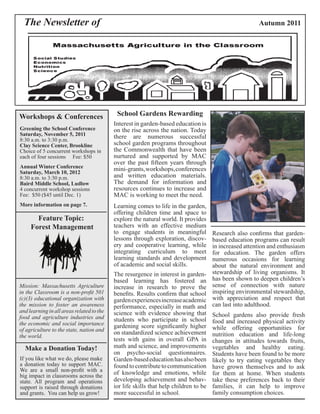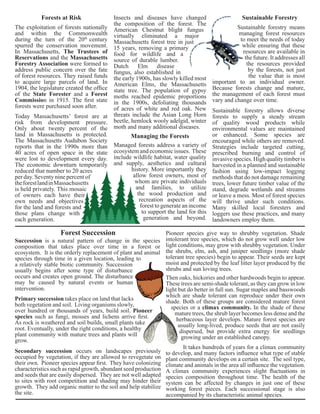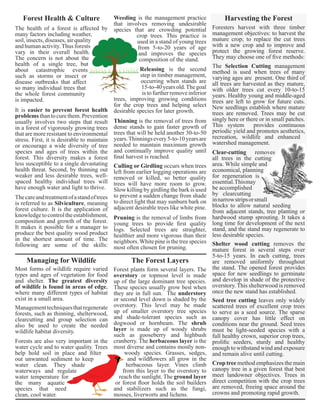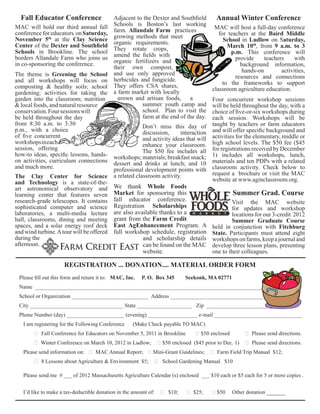The document details upcoming workshops and conferences organized by Massachusetts Agriculture in the Classroom, focusing on agricultural education. It highlights the benefits of school gardens for academic performance and community engagement, as well as the importance of sustainable forest management for ecosystem health. Additionally, the document mentions the availability of mini-grants for agricultural projects and recognizes educators who significantly contribute to agricultural education.







